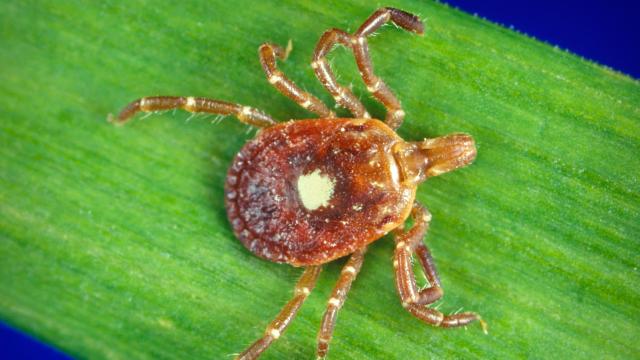Certain ticks in Georgia are carrying an emerging virus that can make people sick, new research shows. The study found traces of the Heartland virus, one of the most recently discovered tickborne germs in the U.S., in the state’s lone star tick populations. The virus found in these ticks appears to be genetically distinct from samples collected elsewhere in the country, suggesting that it’s been present in Georgia for some time now.
The Heartland virus, also called Heartland bandavirus, was first discovered in 2009 by doctors in Missouri. By 2013, it was confirmed that lone star ticks (Amblyomma americanum) can carry and transmit the virus to humans. Its symptoms include fever, headaches, muscle pain, and a large loss of platelets, a blood component crucial to forming clots that prevent bleeding.
Cases of Heartland have been rarely documented since 2009. As of January 2021, according to the Centres for Disease Control and Prevention, more than 50 cases have been reported across 11 states in the U.S. Midwest and Southeast. Identified victims have been routinely hospitalized, and some have died, though these cases tended to involve people already in poorer health. Heartland isn’t easily identified, though, and it’s usually diagnosed after excluding other illnesses with similar symptoms, including other tickborne diseases. So it’s suspected that more cases have occurred than have been officially documented.
Heartland has been spotted in Georgia, where lone star ticks are abundant and are the most common source of human tick bites. So far, though, evidence of infection in Georgia had been only found in white tailed deer, a common tick host, and in a single human death. This new research, published in Emerging Infectious Disease, appears to be the first to confirm that the virus is actively circulating among lone star ticks in the state.
The researchers, hailing from Emory University and the University of Georgia College of Veterinary Medicine, collected nearly 10,000 juvenile and adult ticks between 2018 and 2019 and pooled their DNA to look for traces of the virus. They were able to identify and isolate three distinct samples of the virus, collected from both juvenile and adult ticks at different times and locations. Overall, they estimated that Heartland could be found in about one out of every 2,000 ticks.
The infection rate found in these ticks is relatively low, compared to studies of lone star ticks elsewhere. But the samples of the virus collected by the team all looked genetically similar to one another and not so much to samples collected in other regions. That indicates that it’s made a comfortable home for itself in Georgia, since it’s had enough time to evolve in unique ways from other populations of the virus. Even if the virus is only found in a small number of ticks, the sheer amount of exposure that residents have to them during the busy season (April to May) is likely still enough that a transmission risk exists in the state, according to senior study author Gonzalo Vazquez-Prokopec, an ecologist specializing in vector borne illness at Emory University.
“This study confirms the presence of the virus in Georgia and, more importantly, that it is being transmitted by the most abundant tick species that bites humans in the state,” Vazquez-Prokopec told Gizmodo in an email.
Very little is understood about Heartland virus, the authors note, including its life cycle and how common it is in humans. This lack of knowledge is all the more perilous since tickborne illness in general is on the rise (in no small part due to climate change). Another potential problem has come with the arrival and rapid spread of the invasive tick species Haemaphysalis longicornis, or the Asian longhorned tick.
These ticks, in their native home of Asia, are known to carry a virus related to Heartland that can cause a serious, sometimes fatal condition called severe fever with thrombocytopenia syndrome. If these new bad ticks can also carry and spread Heartland, the researchers warn, that could “lead to major changes” in its transmission potential in areas where both species overlap. After having first been spotted stateside in New Jersey in 2017, Asian longhorned ticks have been detected all along the Eastern U.S., including Georgia in 2021.
The researchers plan to keep studying Heartland in lone star ticks, and they’re now gearing up to keep track of the Asian longhorned tick as well. They also hope their research reminds people that ticks and the diseases they carry are a serious public health threat.
“We want to make the public aware of the importance of protecting themselves against tick bites, particularly the lone star tick, given that there is an additional risk of infection with this novel virus,” Vazquez-Prokopec said. “If going out, use repellent, and check after each hike for the presence of ticks in your body and the body of your dog.”
